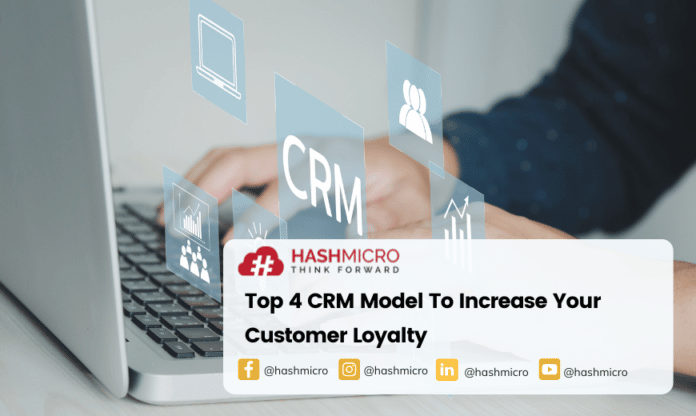It’s five times cheaper to keep an existing customer than to gain a new one. But how do you promote customer loyalty and retain your best customers? Customer relationship management (CRM) is software that helps businesses develop strategic processes to win the loyalty of their best customers and improve the buyer experience.
CRM stands for Customer Relationship Management. A company’s foundational strategy is to develop a customer-centric culture that focuses on managing and optimizing its current and future client relationships.
In short, the CRM model helps businesses analyze data about their customers’ interactions with the company to improve customer value and increase retention and profit.
In other words, CRM relies on a deep understanding of the customer (individually and collectively) to meet their needs, exceed their expectations, and deliver value. Ultimately, the companies that do this best will have an advantage over their competitors.
Key Takeaways
|
Table of Content:
Table of Content
4 Common CRM models
Customer Relationship Management has several models. There are several different strategies or models for customer relationship management. We’ll cover four of the most common CRM models briefly below.
IDIC CRM model
The IDIC model was developed by the Peppers and Rogers Group as a generic blueprint for implementing CRM in a variety of situations. IDIC stands for the four stages of CRM implementation: identity, differentiate, interact, and customize.
Identify
The first step is to identify your customers, which businesses can accomplish by collecting information like the customer’s name, address, and purchase history at each point of contact across the company. The goal is to collect as much information or data as you can on each customer to better understand their needs, wants, and purchase behaviors.
Read More: Having a Bottleneck Problem in Your Manufacturing? These 5 Software Can Help You
Differentiate
The next step is to differentiate or segment your customers based on their current and projected lifetime value. Remember: Not all customers will have the same value to the business.
By differentiating your customers based on their value to the company, you can prioritize your customer relationship efforts on the most valuable clients and tailor your interactions to best fit each segment for optimal profitability.
Interact
The third stage is where you get to apply your CRM plans for interacting with your customers. Once your customers are analyzed and categorized, you can develop customized interactions—for example, for valued customers, you might offer loyalty benefits or rewards to encourage retention and continued spending.
Customize
After you have documented your customer interactions, you can then analyze them to develop a more customized one-to-one service. The goal is to ensure that your customer’s needs and expectations are met and that you have pinpointed them individually (or very narrowly).
QCI model
The QCI model starts with the customer’s external environment at the top—their pain points, business goals, and other factors will affect whether they are ready to buy or interact with your sales team, which in turn impacts the customer experience.
The customer experience then affects customer proposition (what you offer the customer) and customer management activities. As you can see from the magnified version of the inner circle, many activities are involved to acquire and retain customers.
The QCI model also considers the people and technology involved in keeping this whole system going. Although QCI has replaced the word “relationship” in CRM, this model still starts and ends with people.
Payne’s Five Process CRM model
The Five Process CRM model was developed by Adrian Payne and Pennie Frow. This model emphasizes a cross-functional approach for effective CRM processes. There are two main components to the model: cross-functional CRM processes and key elements of CRM implementation.
Payne’s model outlines five processes:
-
- Strategy development
- Value creation
- Multichannel integration
- Information management
- Performance assessment
CRM value chain model
A value chain is a high-level model developed by Michael Porter that identifies the processes a business uses to develop an end product or service for the customer. The goal of the value chain model is to identify and prioritize the most valuable activities of the company and improve processes to gain a competitive advantage.
The CRM value chain model applies this principle to customer relationships. This CRM model observes all the stages and activities required to build a relationship with a customer. These activities are divided into two stages: primary and support.
Primary stage
The primary stage of CRM has five main processes that enable the strategy. There are several strategies in the primary stage. Let’s take a look at it:
Customer portfolio analysis: The initial step of the value chain model, akin to IDIC, involves analyzing customers to pinpoint SSCs (those generating the most value). This analysis aids in understanding customer needs, enabling tailored strategies for maximizing lifetime value.
Customer intimacy: The next step is to engage with customers to expand the database. Collect data at each interaction to understand and serve them better, increasing long-term retention by adjusting services to meet their needs.
Network development: A business’s network includes all people and entities involved in the value chain, including partners, suppliers, customer service, investors, etc. The goal is to use your customer data to inform the processes at each level of your network so that the entire system works together to optimize your customer’s experience.
Value proposition development: Armed with your customer information and interaction data, you can create value for your target customers. The idea is to shift the focus from the product to your service and to reduce process costs to create more value for the customer.
Relationship management: The last stage of the value chain model is to manage your customer lifecycle. This process involves evaluating your business processes and organizational structure to manage acquisition, retention, and customer development.
Support stage
There are five supporting conditions necessary to effectively implement the strategic processes of the primary stage:
-
- Leadership and culture
- Procurement processes
- HR management processes
- IT/data management processes
- Organization design
- Creating and developing these underlying conditions will support a successful CRM value chain implementation.
Use CRM software to support your CRM model
CRM is a big undertaking. Keeping track of all your processes and data can be overwhelming. Luckily, HashMicro can help you. Hashmicro offers you a cloud-based diagramming solution that makes it easy to create streamlined flowcharts and diagrams.
Use HashMicro’s CRM software to visualize your CRM model, document your processes, and even map out your sales org design. Hashmicro also integrates with Salesforce so you can import your schema directly into your document to visualize your data—complete with the official Salesforce shape library—and make connections more easily.
Read More: 5 Effective Ways to Improve Employee Engagement
Conclusion
Customer relationship management (CRM) is an essential component of every part of the business. It is not only restricted to consumer support rather it applies to the entire customer life cycle throughout their journey. Buyers need CRM software to manage their relationships with customers.
All businesses are different however the core principle of success is always the same. So, having a solid base of customer relationships is the foundation of every business. All of the above-defined models are similar, they serve better for different business setups.
Consider these examples, if your business revenue is maintained by simply a few customers, then the CRM Value Chain Model might be the most beneficial relationship framework for your business.
Move to the best CRM software to increase your customer loyalty. Tell us about your type of business and industry and we will offer you the best business solutions. If you want to get a free demo of our tour product, click here!























































